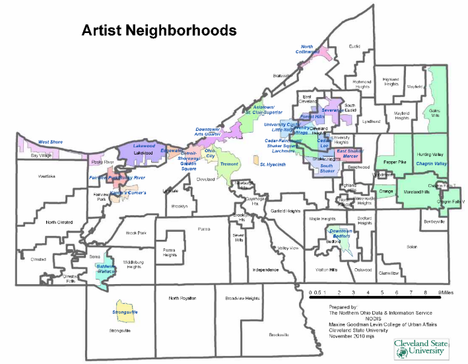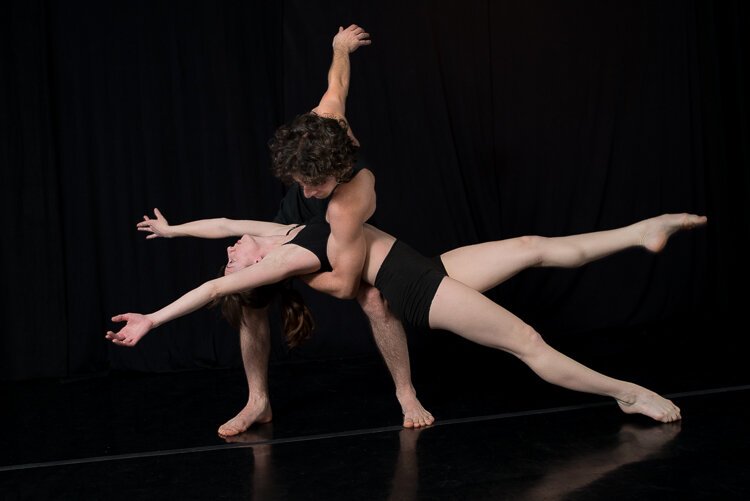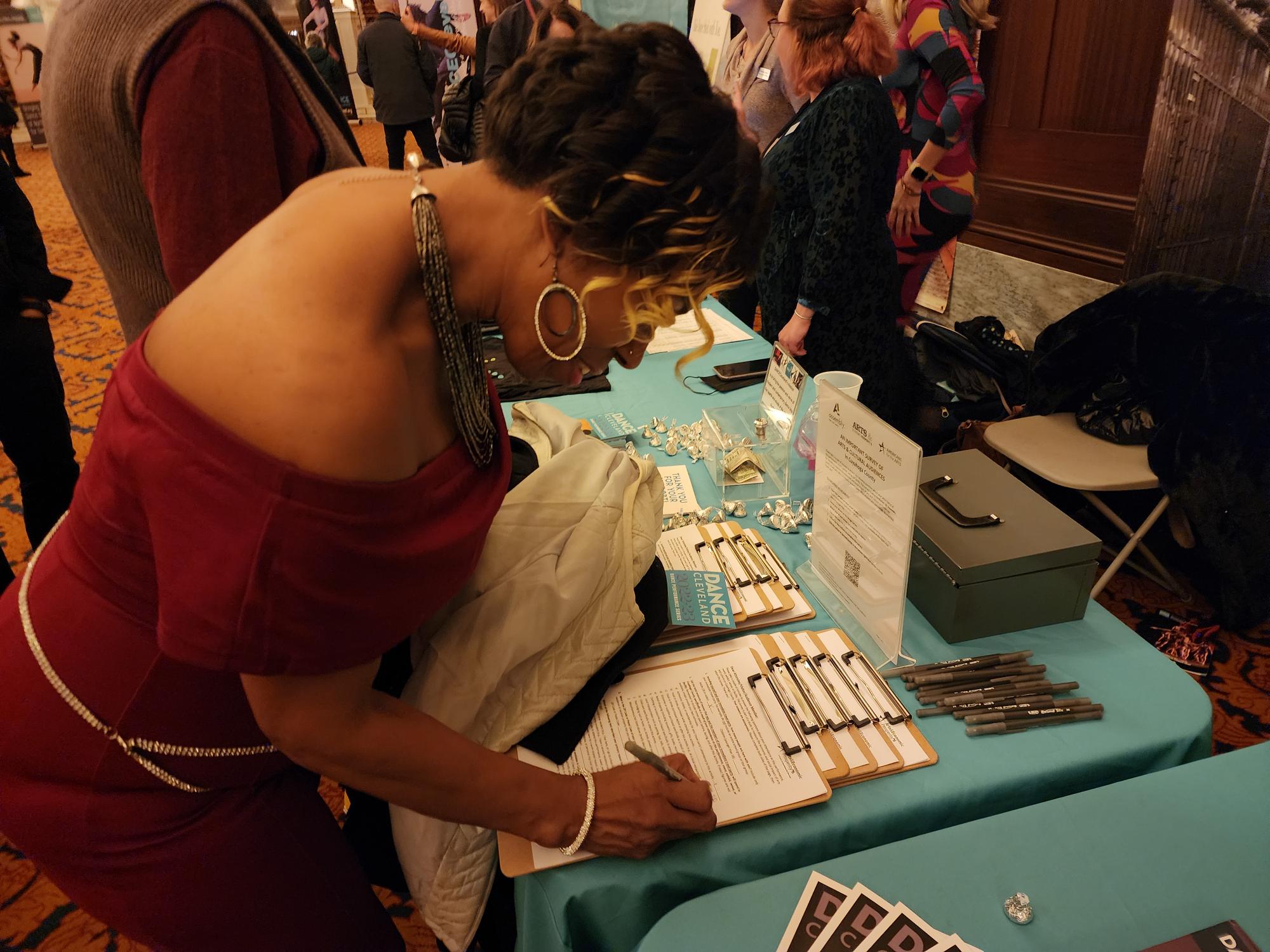Personal View: A Rescue Plan for Cleveland's Creative Communities
Source: Crain’s Cleveland
Abstract:
What makes a neighborhood vibrant? A vibrant community is filled with jobs, creativity, art, music, theater, dance and voices that represent our diversity and experiences. In the coming months, Cleveland will have an opportunity to reinject vibrancy into communities harmed by the COVID-19 pandemic.
As a working artist in Cleveland, I’m joining hundreds of local artists to ask the Cleveland City Council and Mayor Justin Bibb to invest a portion of federal American Rescue Plan Act (ARPA) funds into arts and culture. Cleveland’s rebound from COVID requires an investment not only in public safety, health and human services, but also in the creative sector. Artists, creative businesses and cultural nonprofits form the backbone of Cleveland’s economic vibrancy.
Two Cents: Creatives Campaign for a Slice of Cleveland's Rescue Plan Funds
Source: FreshWater
Abstract:
Before the pandemic, Ohio’s creative sector generated $9.1 billion for the economy and accounted for more than 65,000 jobs, according to Ohio Citizens for the Arts’ 2018 report, Ohio’s Creative Economy: The Economic Impact of Arts & Creative Industries.
When COVID-19 arrived in 2020, Cleveland’s creative community was the first to shut down and has been the last to return to any sense of normalcy. Even now, the region’s creative community continues to suffer, says Jeremy Johnson, president and CEO of Assembly for the Arts, the nonprofit organization focused on increasing equity in Cleveland’s arts and culture industries.
Welcome to Our Southwestern Communities
Welcome to Our Southwestern Communities
The southwestern communities of Cuyahoga County represent a blend of shopping convenience, highway access and proximity to Cuyahoga Valley National Park. Situated in the midst of it all is greater Cleveland’s primary airport, Cleveland-Hopkins, the NASA Glenn Research Center and a number of walkable, historic towns.
Where Are Artists Locating?
Artists can be found throughout the southwestern suburbs; however, CPAC’s research shows that they are most prevalent in Berea and Strongsville.
Who Can Help Me Find Space?
With 58 cities and townships in Cuyahoga County, each with their own distinct character, it can be difficult to find the perfect fit for your preferences through an online resource. That’s why CPAC recommends that artists get out and explore communities before committing to a particular city or neighborhood. Along the way, there are also a lot of resources that can make this search easier for you.
City and County Government
When looking for space in suburban markets, city government can be one of your greatest resources. Some cities have specific pages devoted to people interested in relocating to their community. If you’re unable to find a web page that matches that description, pages for Community Development and Economic Development Departments can often provide additional information and resources for home and commercial space buyers. In smaller cities and townships you may not find a page specifically related to development; in this case, it may be best to contact a main phone number. Cuyahoga County’s website features a listing of all 58 municipalities’ direct lines.
Other Resources
Community Development Corporations can be an extraordinary help when you are looking for information and resources about a particular community. These nonprofit organizations work to revitalize the neighborhoods and cities where they are located, sometimes through planning, sometimes through real estate development and sometimes through services like block clubs, community policing or art festivals. The primary community development organization in the southwestern suburbs is the Berea Community Development Corporation.
Beyond this community-specific resource, you may also find additional support through regional resources to learn more about neighborhoods, space and community resources throughout the entire region. One of the primary organizations filling this role is Global Cleveland.
Welcome to Our Western Communities
Welcome to Our Western Communities
With some of the best access to the lakeshore and parklands in greater Cleveland, the western communities have drawn a wide variety of artists to properties ranging from bungalows to lakefront mansions. The city of Lakewood remains one of the densest suburbs in the country, with walkable streets and plenty of activity. Further to the west, suburbs grow more residential and less commercial, creating the sense of a strong-knit community.
Where Are Artists Locating?
You can find artists locating across the western suburbs but CPAC’s research suggests that they are showing up in the highest numbers in certain cities, particularly communities closer to the Lake Erie Shoreline:
Who Can Help Me Find Space?
There are 58 cities and townships in Cuyahoga County, and each has its own distinct character. We recommend that artists take some time to get out and explore communities to find one that’s the perfect fit for them. There are a lot of resources that can help you in your search.
City and County Government
When looking for space in suburban markets, city government can be one of your greatest resources. Some cities have specific pages devoted to people interested in relocating to their community. If you’re not able to find something like that, Community Development and Economic Development Departments can often provide additional information and resources for home and commercial space buyers. In smaller cities and townships, you may not find a page specifically related to development; in this case, you may want to contact a main phone number instead. Cuyahoga County’s website features a listing of all 58 municipalities’ direct lines.
Other Resources
Community development corporations can be a strong partner when you are looking to find information and resources about a community. These nonprofit organizations work to revitalize the neighborhoods and cities where they are located, sometimes through planning, sometimes through real estate development and sometimes through services like block clubs, community policing or art festivals. The primary community development corporation in the western suburbs is LakewoodAlive.
Beyond this community-specific resource, you may find additional support through regional resources aimed at helping people learn more about neighborhoods, space and community resources throughout greater Cleveland.
Welcome to Our Southeastern Communities
Welcome to Our Southeastern Communities
Situated between the city of Cleveland and the city of Akron, the southeastern communities have tremendous access to both cities as well as the Cuyahoga Valley National Park. Nearer to Cleveland, the southeastern suburbs have access to a great deal of shopping options, while those closer to the border of the county give way to quaint town centers and farmlands.
What Are Artists Locating?
Artists are present in virtually every southeastern suburb, but CPAC’s Putting Artists on the Map report suggests that downtown Bedford is the current epicenter of the southeastern artist community.
Who Can Help Me Find Space?
Cuyahoga County is home to 58 cities and townships, each with their own distinct character. For this reason, CPAC recommends that artists take time to explore communities to find a perfect fit before committing to any one particular community. Along the way, there are a number of resources that can help make your search easier.
City and County Government
When looking for space in suburban markets, city government can be one of your greatest resources. Some cities have specific pages devoted to people interested in relocating to their community. If you’re not able to find something like that, Community Development and Economic Development Departments can provide additional information and additional resources for home and commercial space buyers. In smaller cities and townships, you may not find a page specifically related to development; in this case, it may be best to contact a main phone number. Cuyahoga County’s website features a listing of all 58 municipalities‘ direct lines.
Other Resources
Beyond these government resources, you may also take advantage of other efforts to learn more about neighborhoods, space and community resources throughout greater Cleveland. The primary nonprofit organization providing this type of service to individuals is Global Cleveland.
Welcome to Our Eastern Communities
Welcome to Our Eastern Communities
The eastern communities are some of the oldest suburbs in greater Cleveland and home to some of the highest concentrations of artists in our region. Inner ring suburbs like Cleveland Heights, East Cleveland and Shaker Heights grew up at the turn of the 20th century around the streetcar and feature dense commercial districts and large houses on winding boulevards. Further to the east, the communities of the Chagrin Valley feature historic New England-style villages and towns peppered among parklands and rivers.
Where Are Artists Locating?
Artists are laying down roots across the eastern suburbs. Through our Putting Artists on the Map research, however, CPAC has been able to identify particular areas where artists are locating in large numbers:
- Cleveland Heights (particularly the Cedar-Fairmount, Cedar-Lee, Coventry Village and Severance neighborhoods)
- East Cleveland (particularly the Forest Hills neighborhood)
- Shaker Heights (particularly the East Shaker / Mercer, Moreland Hills and South Shaker neighborhoods)
- The Chagrin Valley (including the cities of Chagrin Falls, Gates Mills, Hunting Valley, Moreland Hills, Orange and Pepper Pike).
Who Can Help Me Find Space?
There are 58 cities and townships in Cuyahoga County, each with their own distinct character. Before renting or buying space, we recommend scheduling some time to get out and explore communities to find one that’s the right fit for you. There are also a lot of resources that can help you in your search.
City and County Government
When looking for space in suburban markets, city government can be one of your greatest resources. Some cities have specific pages devoted to people interested in relocating to their community. Community Development and Economic Development Departments can often provide additional information and resources for home and commercial space buyers. In smaller cities and townships, you may not find a page specifically related to local development; in this case, your best bet might be to reach out directly to a main phone number instead. Cuyahoga County’s website features a listing of all 58 municipalities’ direct lines.
Other Resources
In the eastern suburbs, there are a number of neighborhood-specific websites that can provide you with additional information:
The city of Cleveland Heights also maintains a webpage devoted to the Severance Shopping Center located in the heart of the Severance neighborhood.
Community development corporations can also be a tremendous resource when you are looking for information and resources about a community. These nonprofit organizations work to revitalize the neighborhoods and cities where they are located, sometimes through planning, sometimes through real estate development and sometimes through services like block clubs, community policing or art festivals. The primary community development corporation in the eastern suburbs is FutureHeights.
Beyond these community-specific resources, you may find additional support through regional resources. These are aimed at helping people learn more about neighborhoods, available space and community resources throughout greater Cleveland.
Where Are Artists?
Where Are Artists?
The most basic way to understand the location decisions of artists is to see where they are currently living by pinpointing their current addresses on a map. The database of 4,016 individual artist addresses was used to geocode or map their locations. After completing this, Northern Ohio Data and Information Service (NODIS) and CPAC staff used a block group level map of the number of artists and artists per adult population (based on 2000 Census data), along with Geographic neighborhoods in the county.
The twenty-four artists neighborhoods are listed below and shown in the following maps.
The map below shows artist neighborhoods colors are used to distinguish the neighborhoods.

The second map shows artists and artist neighborhoods. This map has red dots to show the areas that are most populated by artists.

Cleveland
Cleveland
If you’re talking artist communities in Cuyahoga County, it’s hard to overlook the creative energy that’s bubbling up in Cleveland. Artists are laying down roots in neighborhoods across the city, transforming the appearance of our main streets and finding ways to get engaged in revitalizing our urban core.
Cleveland is full of dense commercial districts showing new signs of life, old industrial buildings converted into modern live/work lofts, hundreds of great restaurants and a buzzing nightlife. It’s also a city of tree-lined boulevards and quiet residential streets with historic single-family homes. In short, it’s a city that’s large enough to provide you with a variety of inspiring settings … but at a fraction of the cost of other large cities.
Where Are Artists Locating?
While you can find artists in every neighborhood in the city, CPAC’s research shows that some city neighborhoods are drawing large numbers of the artistic community:
- Asiatown and St. Clair Superior
- Detroit Shoreway and Gordon Square
- Downtown and the Arts Quarter
- Edgewater
- Kamm’s Corners
- North Shore Collinwood and Waterloo Arts and Entertainment District
- Ohio City
- Buckeye – Shaker Square – Larchmere
- St. Hyacinth and Slavic Village
- Tremont
- University Circle and Little Italy
Who Can Help Me Find Space?
Like most of the urban centers in the Northeast and upper Midwest, Cleveland is a city of neighborhoods, each with its own distinct culture and character. For artists wanting to locate their home or business in Cleveland, we always recommend getting out and exploring these neighborhoods. Seeing the building stock, visiting commercial districts and talking directly with residents will give you a much better sense of which areas best meet your interests and preferences. Beyond this on-the-ground exploration, there are a number of other resources that can be helpful in your search for space.
Corporations
Cleveland has one of the strongest networks of community development corporations in the country. These organizations work on the neighborhood level to improve the local economy and quality of life. Almost every neighborhood in the city of Cleveland has an active community development corporation. If you are looking to find out more about a neighborhood, or specific rental or ownership opportunities in that neighborhood, the local community development corporation can be a good first step.
- You can find a comprehensive list of these organizations on the LiveCLEVELAND! website.
- You can find out about additional investments community development corporations are making in the city through Cleveland Neighborhood Progress.
Other Space-Related Resources
A number of other organizations provide great information for artists searching for space. These range from artist-specific initiatives, like ArtSpace Cleveland and Creative Compass, to more general resources for looking for space in the city:
- LIVECleveland
- Global Cleveland
- Retail Spaces Cleveland
Online Forums and Neighborhood Guides
- In addition to the formal initiatives and organizations listed above, a number of informal resources are also available to help you in your search for space within the city. First ask our own community of artists at the Creative Compass Forum. The urban policy forum UrbanOhio is a great place to find neighborhood information and ask questions about where to locate. A number of online neighborhood “tours” are available for Cleveland, including Neighborhood Link’s data-rich profiles and Design*Sponge’s detailed look at a handful of Cleveland neighborhoods. More recently, residents are making more of an effort to launch their own introductions to Cleveland, like the detailed New to Cleveland guide by residents Justin Glanville and Julia Kuo.
Get Involved
Get Involved
Learn from Issues
If you are interested in being more politically active, or at least more publicly engaged, the best place to start is by building the foundation. Assembly has developed some content on arts advocacy that provides a good place to start.
Know Your Public Officials - and What They Are About
For many of us, our interaction with our public officials ends when we submit our ballot; however engaging in our community leaders’ decisions should not stop there. Public officials are in place to represent our best interests. As their constituents, we should take the time to learn more about them. What are her goals? What is his voting record? What is on the agenda at the next public meeting? Before you send an email or make a phone call to share your opinion, remember that public officials were put in place because of their own values and decision-making strategies. Understand where your representative is coming from and learn more about the issues they care about. Once you have that knowledge, you will be in a much better position to share how your interests may align with their goals and the goals of your community.
Become an Artist Activist
Once you have the knowledge you need, make your move. We talked a lot about being an artist activist in our From Rust Belt to Artist Belt 2 conference; here are some key strategies you can follow to be successful:
Start early
- Start early; and if you can’t, do not let that discourage you from starting at all
- Officials are sometimes the obstacles, so work on campaigns and become involved in the political process to help get the best ones elected
- Familiarize yourself with the bureaucratic process
Bring the arts to them
- Bring public officials into direct contact with the arts by inviting them to special events, adding them to your mailing lists and regular sending press releases to them
- Counter misinformation and stereotypes of artists and the artistic community
Get a group together
- Put together a coalition among peers to build consensus on which policy goals to prioritize
- Reach out to everyone, even those who may not be known arts supporters; you never know what passion or connection they may harbor for the arts
- Enlist the help of friends with additional connections and form strategic alliances
Refine your message
- Make sure what you are asking is doable. Be united around a workable and well-thought-out plan. Use data to support your case or demonstrate economic benefits like job creation.
- Strategically frame your cause to appeal to the broader community in order to get the attention of public officials. Communicate the benefits of your plan so they can understand and help you communicate its value.
- Presenting your message may be even more important than the message itself. Tell moving and interesting stories to help you appeal to the human side (as opposed to the data-driven side) of officials.
- Don’t be discouraged if you are not initially heard. Persevere and build a bigger voice by collaborating. As you build your movement, check to see if you are advocating for the same end goal as a larger group or sector. Use their size to help you win support for the cause. You may have to give up a little control to achieve a mutual end result; however, a success after all your efforts will be worth it.
Build relationships
- Establish relationships with key leaders like government administrators and elected officials before you need something
- Ask good questions, especially those that help you figure out the official’s taste in the arts. What would motivate her to help? What end result he trying to achieve?
- Ask for advice and referrals. This will enable you to reach more people and will add buy-in for your public official
- Find common ground, make a connection and help your officials realize the win-win for you and their constituents
Get Acquainted
Get Acquainted
Why Cleveland?
As you’ll often hear, Cleveland has a great community of artists. Northeast Ohio is building an infrastructure around creative professionals that rivals some of the best cities in the nation. There are many resources designed specifically for local artists. We’ve designed this entire Creative Compass website around artists needs and the support available to them.
To find out more about what Arts Cleveland has been directly involved in, visit our website.
There are some additional characteristics of Cleveland that seem to make it tailor-made for artists:
- Great Spaces: so often we hear that artists could “never afford a space this amazing” in another city. With a host of live-work lofts and community development organizations to support urban growth and redevelopment, Cleveland and its surrounding suburbs and counties is a prime place to set up shop.
- Centrally located: It’s no secret that artists travel. Cleveland is in a great position to easily reach New York, Chicago, Philadelphia, Detroit, Pittsburgh, Miami, Toronto and St. Louis. Live in Cleveland – Tour the World!
- Penetrable: artist Don Harvey said it best in the Fellowship video – “Cleveland is a big enough city that if you do something here, it gets noticed outside the city, but it’s small enough that you can find some room to do something. All the territory is not already staked out.”
- Welcoming: We have a great community of artists and creative professionals. We accept new comers and returning Clevelanders with open arms.
Where to Start
Start growing your network where you are most comfortable. This will be different for everyone, as will be the goals you are trying to accomplish. You may want to get your feet wet and simply read what others are saying or attend an event. Or you may be the type to jump right in and find collaborators and build out new initiatives. Either way, here are some resources to get you started:
- Read the neighborhood guide to get more information on specific areas in greater Cleveland and what assets they have for artists
- View the community event calendar to see networking events that are coming up
- Search for organizations that offer services directly for artists in your discipline and can help you make connections
- Tune in to conversations artists are having, view their work (Cleveland has two artist registries: https://www.clevelandartistregistry.org/ and https://www.clevelandartsevents.com/artist/
- Feel free to stop in if you’d like tailored advice on who to talk to.
How to Make Your Approach
Even through our harsh winters, Cleveland is a welcoming place, and most people will be responsive to pointing you in the right direction. If you are interested in getting involved with a group, the simplest approach may be to ask about the process directly. Learn the location and time of the next meeting and ask if the organization is accepting new members. Find out other ways (in addition to memberships) that you may also become involved.
If you are considering a deeper involvement or investment (of time, money, ideas, etc.) there are a few tips to keep in mind:
- Know who you’re talking to. The number one rule in any communications strategy is to know your audience. The same goes for approaching individuals or organizations. Before you meet with someone, read up on the organization or company website or individual. Plan out how you intend to frame the discussion based on both of your interests. It easier to talk to someone when you have a common understanding of each other. Attending a meeting with this understanding demonstrates that you respect your colleague’s current goals and presence; genuine interest in their work will always be welcome. Organizations have a current and strategic set of programs and services as well. Understand how you may fit in as you begin those conversations.
- Communicate what you are looking for without being too aggressive. Once you understand who you are talking to and what approach might be best for them, be ready to answer their most logical questions: How canI help you? And what benefit might I receive in doing so? A straight pitch is not always the way to go (unless you’re on SharkTank). In fact, a first meeting often may be more about learning what your contact’s roles and responsibilities within the organization. Setting up informational interviews can be much less intimidating for both parties. This way, if the person can’t help you immediately, you can avoid an awkward or uncomfortable situation. You will have established a new contact for the future and can ask if she may know anyone else in the organization that may be a better fit for your current need.
- Follow up. Send a thank you note or an email recapping what actions you’ll be taking next. A quick “thank you” goes a long way.




